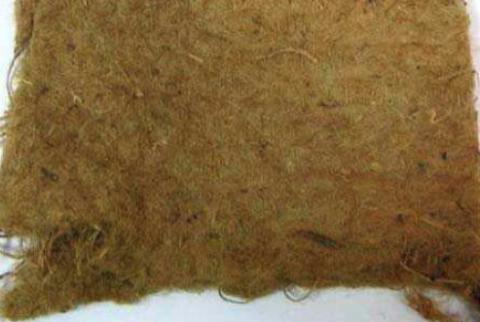Purpose
Workplace Health and Safety Queensland is aware of media reports about hessian bags, previously used to transport asbestos, being recycled to make carpet underlay. The issue was raised in Western Australia in 2006 and more recently in 2009.
Reports indicate that hessian bags were used to transport asbestos from Wittenoom to Perth between 1950 and the early 1970s and a number were recycled in the manufacture of carpet underlay. Information from the Department of Health in Western Australia indicates that as the bag recycling process involved mechanical shredding, vibration and cleaning of material it is considered likely the majority of asbestos fibres would have been removed during the process.
Was it used in Queensland?
Currently, it cannot be confirmed whether this type of carpet underlay was used in Queensland. If it was used, it is reasonable to assume that a large percentage has already been removed as carpets are likely to require replacement every 7-10 years. The recycled carpet underlay was used until the early 1970s.
What does the suspect underlay look like?
The exact characteristics of the suspect underlay are not fully known. However, it is likely to be brown in colour and look like a fibrous mat. It is also likely to be compacted as it has been under the carpet and walked on. In most cases the underlay was either glued on to a concrete floor or stapled on to a timber floor.

Other types of underlay (eg. rubber, foam) are not known to contain asbestos.
Is there a health risk?
If underlay that is an asbestos containing material has been installed, the health risk is considered very low if the underlay remains under the carpet and undisturbed.
Carpet underlay that contains asbestos fibres is to be regarded as a 'friable' asbestos containing material. This means that the asbestos fibres are in a loose form and if the underlay is disturbed, for example, for repairs or removal, asbestos fibres would become airborne and could be inhaled.
Repairs or removal
Carpets and carpet underlay laid prior to 1980 should be considered suspect. No repairs or removal work can commence until the underlay is inspected.
Suspect carpet underlay can be inspected safely. A 'Class P2' face mask (not a dust mask) must be worn at all times when the underlay is being inspected. Single-use P2 masks are available from safety equipment stores and some hardware stores. They will state 'P2' and AS/NZS 1716 somewhere on the mask.

To inspect the underlay, gently lift a small portion of the carpet that allows easy access for identification. If the underlay looks like a suspect underlay, gently put the carpet portion back down. Any suspect underlay that has been identified must be assessed by a competent person before the carpet is disturbed. Samples of the underlay must be taken by a competent person and analysed by a National Association of Testing Authorities (NATA) accredited laboratory. The NATA website https://nata.com.au/ lists laboratories accredited to perform asbestos analysis.
If the underlay is an asbestos containing material, removal of the underlay and the carpet must only be carried out by an 'A class' asbestos removal certificate holder and performed in accordance with the national Code of Practice for the Safe Removal of Asbestos 2nd ed. [NOHSC:2002(2005)]. 'A class' asbestos removal certificates are issued by Workplace Health and Safety Queensland.
Does the 10 square metre rule apply to the carpet underlay?
No. The 10 square metre rule only applies to the removal of 10 square metres or more of bonded asbestos containing material, such as asbestos cement sheeting or asbestos vinyl tiles. Bonded asbestos containing material is a material that contains a bonding compound reinforced with asbestos fibres. Carpet underlay that contains asbestos fibres is to be regarded as a 'friable' asbestos containing material. Therefore, 'B class' bonded asbestos removal certificate holders are not authorised to remove carpet underlay that contains asbestos fibres.